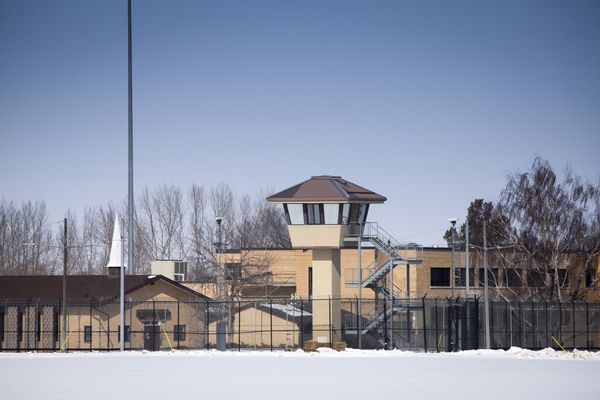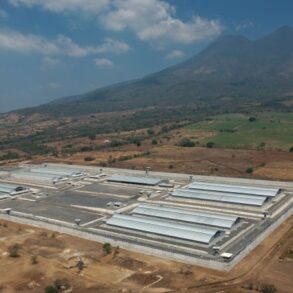
The Bowden Institution medium security facility near Bowden, Alta., on March 19, 2020.Jeff McIntosh/The Canadian Press
Catherine Latimer is the executive director at the John Howard Society of Canada.
Today, Canada will receive an assessment of its human rights record as part of the United Nations’ Universal Periodic Review (UPR). Every UN member state undergoes a UPR assessment, which invites “relevant stakeholders” such as national human rights institutions to provide documentation about the human rights successes and failures of the state under review.
In that spirit, the Canadian Human Rights Commission (CHRC) made a submission to the UPR that focused on “situations where people are deprived of their liberty.” Ultimately, the CHRC recommended that Canada ratify the Optional Protocol to the Convention against Torture (OPCAT), which would enable “ongoing and enhanced independent oversight, monitoring and reporting in all places of detention” to ensure that Canada meets its human rights commitments in facilities such as jails and prisons.
We at the John Howard Society of Canada (JHSC), an organization committed to protecting the human rights of incarcerated people in this country, support the CHRC’s call for Canada to ratify the OPCAT. We believe that oversight from an international body is needed in this country because we frequently hear from incarcerated people whose human rights have been violated, including from people whose treatment in Canadian prisons amounts to torture.
According to the Canadian Criminal Code, torture “means any act or omission by which severe pain or suffering, whether physical or mental, is intentionally inflicted on a person.” Yet the application of this definition isn’t straightforward in jails and prisons, which are by nature punitive and violent but also secretive. Excessive institutional violence, including torture, is often hard for outsiders to identify and easy for officials to rationalize.
Consider, for example, Canada’s continued use of solitary confinement. In 2019, the Supreme Court found that administrative segregation, a form of solitary confinement used in Canadian prisons, was cruel and unconstitutional. According to the UN’s Standard Minimum Rules for the Treatment of Prisoners (Rules 43 and 44), prolonged solitary confinement, which many imprisoned people experienced in administrative segregation, met the definition of torture. And so, to great fanfare, the federal government passed Bill C-83, which introduced structured intervention units (SIUs) to separate prisoners and, in theory, ensure that they were not isolated for extended periods of time.
Yet a 2021 report found that prolonged solitary confinement continued to be used in Canada’s prisons, and imprisoned people tell us that the practice persists today. The structured intervention units were only a rebranding that obscured torture; like a new dust sheet covering an old chair, it served to soften the rough edges and distort the details.
At JHSC, we hear from Canadian prisoners who have been subjected to other cruelties that meet the definition of torture, but their experiences go largely unreported. Sometimes, these cruelties form a pattern, indicating that they aren’t isolated acts of brutality but are instead, at some level, established practices.
For example, some imprisoned people tell us that guards have refused to provide them with their prescribed medication, including for pain. Although seemingly passive, withholding pain medication constitutes torture under the Criminal Code because it is the intentional infliction of “pain and suffering” through “omission.”
Imprisoned people have also described how guards at some facilities have intentionally locked prisoners who are known enemies, such as rival gang members, between two safety doors, caging them together to coerce them to fight. This practice, called “double dooring,” is used by guards to intimidate, coerce, or punish disobedient prisoners. Double dooring did receive some media exposure in a 2017 report about harassment at the Edmonton Institution maximum-security prison, but in that case, it was only discussed as a practice used by guards to intimidate other guards. That this cruel practice has a history of being used against imprisoned people has gone largely unrecognized.
OPCAT’s review of Canada’s detention facilities would help protect imprisoned Canadians against these and other forms of torture and cruelty because international oversight can affect domestic policy. International attention to segregation and racial violence in the 1950s and 1960s, for instance, helped force U.S. politicians to pass legislation like the Civil Rights Act and the Voting Rights Act.
Ultimately, ratifying the OPCAT would help safeguard this country’s human rights obligations as established in agreements such as the UN Charter and the Universal Declaration of Human Rights, and clarify Canadian values both domestically and internationally. It would also give Canada the moral authority to demand that other countries be similarly transparent to international oversight. That, after all, is what Canadian leadership on the world stage should look like.
This post was originally published on this site be sure to check out more of their content.






